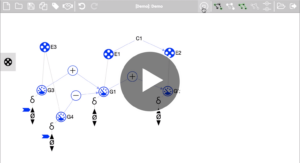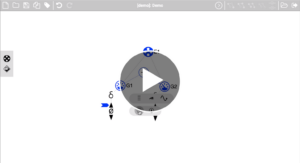Using DynaLearn learners create conceptual models. Doing so they develop insight into what systems are, how systems function, and how the behaviour of systems can be explained. This stimulates a deep and lasting capacity for systems thinking.
Lessons - How to use it?
Geography
How does an increase in carbon dioxide emissions cause global warming? And what is the relationship with the decrease in biodiversity on earth?
Lesson about the neolithic age. Human societies made a transition from hunting and gathering to an agricultural way of living. What drove this transition?
Lesson about water management in the Amazon region. What effect does the size of the forest have on the water capacity of the soil?
Biology
What are the consequences of nitrogen enrichment for the food chain in a fen lake? Which plants and animals are affected? And which benefit?
Sea otters restore kelp forests because they love to eat sea urchins. And the sea urchins are happy about this. How does the work?
Which hormones prevent you from getting brittle bones? And what does this have to do with the amount of sunlight on your skin?
Economy
Do government subsidies affect the supply and demand of sustainable products, such as solar panels? This lesson examines consequences of cost price increase.
Lesson about the funding ratio of pension funds. Depending on the value of the funding ratio, the level of the pension must be adjusted. How does this work?
The business cycle concerns the fluctuations in short-term economic growth. Which economic phase are there and how are they described?
Physics
What is Sound? What is the role of source, medium and receiver? What do we know about frequency and amplitude and their relationship with pitch and volume?
When a balloon is inflated, air enters the balloon. The pressure and volume change. The balloon gets bigger. The material stretches. How does this work?
Lesson about the relationship between net force, acceleration and velocity. And about how gravity and air friction determine the net force of a falling object.
Physics/Astronomy – NOVA
Some stars have a blue color, others appear to be red. In this lesson you will explore how and why stars differ from each other.
When is a star a massive star or a red dwarf and how does that relate to their lifespan? This lesson discusses the state of stars.
This lesson is about the formation of a star and how a star achieves a balance between gravity and nuclear fusion.
Log in
Contact
This site is protected by reCAPTCHA and the Google
Privacy Policy and Terms of Service apply.








